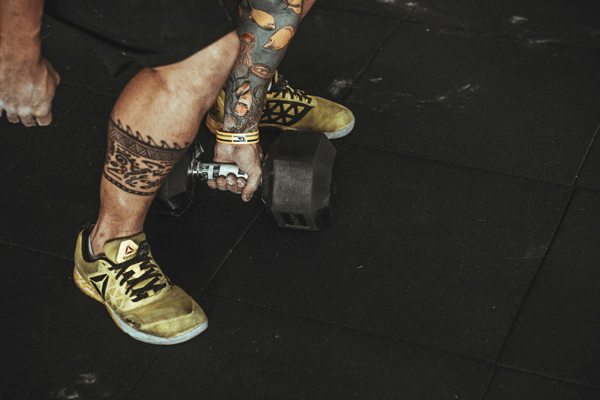Table of Contents
If you’re a physically active person and you’re thinking about getting a new tattoo, then it’s safe to assume this question has crossed your mind. There are a lot of variables to consider when taking this question into account, so read on to get a better understanding on whether you should hit the treadmill or wait a few days.
During the initial stages after getting a tattoo, the tattooed area is the equivalent of an open wound, making it susceptible to irritation, damage and infection. After receiving a tattoo, the body initiates a healing process and these first couple of days are critical as the skin recovers from the trauma caused by the tattoo needle. This period is the most important to pay attention to when discussing the idea of exercising and its risks. Sweat, friction from clothing, and repetitive movements that stretch and contract the skin can hinder the healing process and increase the likelihood of complications.

Cardiovascular Exercise
If you’re big into your running or cycling then please read on. Exercises that are more focused on cardiovascular health are always accompanied by sweat and body heat, which doesn’t bode well for a fresh tattoo. Excessive sweating can introduce bacteria into the skin, potentially leading to infections or causing issues with the scabbing stage of the healing process.
This goes without saying that jumping in a pool to get a few lengths in is definitely a no-no. We want to keep the area as clean as possible during the healing process, so submerging your tattoo into a swimming pool is something to steer clear from for around 2-4 weeks, depending on how your tattoo is healing.
Weightlifting
Hitting the dumbbells has become increasingly popular over the last 10-20 years, so asking if resistance training is a good idea post tattoo is a question us at The Hangout Studio get asked quite often. To touch on what was briefly mentioned earlier, the main things to consider are the area of your tattoo and the intensity of your workout. We want to minimize any pressure or friction being applied to the tattoo as this will delay the healing process and could possibly cause damage to the tattooed area.
To say this in another way – don’t go trying to hit any Personal Bests (PBs) within the first few weeks of getting a new tattoo, if you’re going to lift weights then you want to aim for low intensity exercise with minimal sweating/friction.

Train Opposing Muscle Groups
A little anatomy hack you could take advantage of is training muscle groups that don’t directly affect the tattooed area of your body. So if you’ve had a tattoo on your arm, then doing movements that are more leg focused would be ideal – keeping in mind how the upper body is moving during the exercises. If you’re doing squats for example, you’d want to consider how your arm is holding the bar when doing so. If when twisting your arm you are contracting or stretching the tattooed area then steer clear of squats for another week or so. On the contrary, if your new tattoo is placed on your calf, then any upper body movements aren’t going to directly affect your tattoo so you can bicep curl until the cows come home.
Further Down The Line
As the tattoo progresses through the healing stages, usually spanning from a few days to a few weeks, the likelihood of engaging in moderate exercise increases. Even during this phase it’s still prudent to consult with your tattoo artist or healthcare professional before resuming high intensity workouts. So waiting until the tattoo has visibly healed and the skin has returned to its normal state before diving back into your usual gym routine.

To sum it up, exercising after getting a tattoo requires careful consideration and adherence to proper aftercare instructions, whilst also understanding that when it comes to the healing process – we’re all different. If you can still see evidence of your tattoo still healing after 5-6 weeks, it’s still good practice to be mindful of your new piece. The reality of the situation is that we’re talking about a couple of weeks of adherence to ensure that the new tattoo will be looking clean and crisp in many years to come.


 Tiếng Việt
Tiếng Việt


